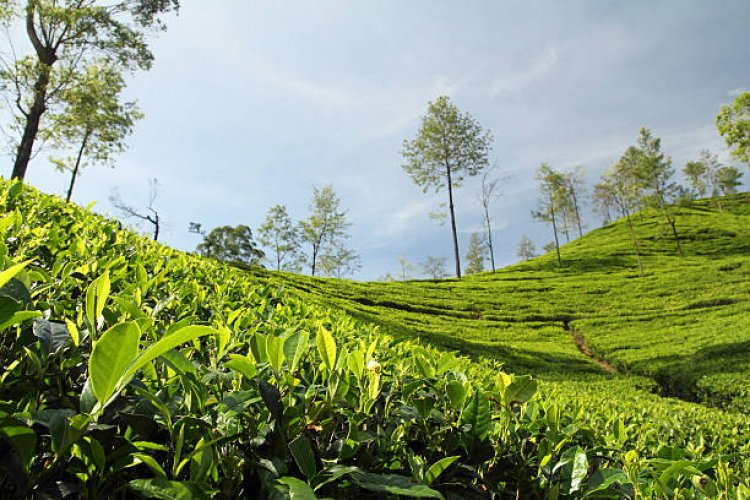Tea Production of Nepal: An Overview of Commercial Tea Farming
Get an overview of commercial tea farming in Nepal, including production data, rural livelihoods, and sustainable agriculture practices.

Nepal, a small South Asian country located between China and India, is a land of diverse topography, with high mountains, fertile valleys, and rolling hills. The country is known for its natural beauty and cultural heritage, but it is also becoming increasingly famous for its tea production. Although the country is not yet a major tea producer compared to its neighboring countries, the industry is growing rapidly, thanks to the high-quality tea produced in Nepal's fertile soils and favorable climate.
Commercial Tea Farming in Nepal: Statistics and Distribution
Among the country's 77 districts, only 14 have commercialized tea cultivation. According to research report of NRB, around 9,236 farmers/businessmen are engaged in commercial tea farming, of which 9,127 (98.8%) are individual and 108 (1.2%) are institutional. It seems that these farmers/businessmen have 12,066.5 hectares of land for tea farming, with the most significant area, 7,195.15 hectares, being in the Jhapa district and the least, 25 hectares, in the Morang district.
From the data, it is apparent that the tea production industry in Nepal is largely driven by small-scale, family-run farms. These farms produce an estimated 10 crores 80 thousand metric tons of green tea leaves annually, with the most significant production of 8 crores 25 lakhs 17 thousand metric tons being in the Jhapa district and the least, 1.8 metric tons, in Bhojpur. The industry provides a livelihood for 18,180 family members, with 9,374 male and 8,807 female workers involved in tea farming.
Furthermore, there are 113 tea factories in Nepal, where the green leaves are processed to produce different types of tea. The factories are concentrated mainly in the eastern part of the country, particularly in the Jhapa and Ilam districts.
The Role of Training in Commercial Tea Farming
Despite being small-scale, the commercial tea farming industry in Nepal is growing, and training plays a vital role in this growth. According to the data, 53.4 percent of the major operators of commercial tea cultivation have received training. The training provided by various organizations and institutions in Nepal includes technical knowledge about tea farming, processing, packaging, and marketing.
The Importance of Commercial Tea Farming in Nepal
Tea production is an essential industry in Nepal, not only for economic reasons but also for social and environmental reasons. Some of the major importants of tea farming in Nepal are:
- Provides livelihood for thousands of farmers and their families, particularly in rural areas.
- Contributes to the overall development of the country's economy, particularly in the areas where tea farming is prevalent.
- Promotes sustainable agriculture practices, as tea farming involves the minimum use of chemical fertilizers and pesticides.
- Supports soil conservation and biodiversity, thereby contributing to the conservation of the country's natural resources.
- Generates foreign exchange earnings, as Nepal's tea is exported to various countries around the world.
- Creates employment opportunities in the tea processing and manufacturing industry, which includes jobs for skilled and unskilled workers.
- Contributes to the overall socio-economic development of the country, as tea farming and production help to alleviate poverty and improve the standard of living for farmers and their families.
- Promotes tea tourism in the country, as Nepal's tea gardens and plantations attract both domestic and international tourists.
- Helps to preserve Nepal's traditional tea culture and heritage, which has been passed down through generations.
Challenges and Opportunities for Tea Production in Nepal
Despite the growth and potential of the tea industry in Nepal, there are also opportunities and challenges that need to be addressed. Some of them are:
Challenges:
-
Lack of Infrastructure and Facilities:
One of the primary challenges facing the tea production industry in Nepal is the lack of infrastructure and facilities. This is particularly the case in remote areas where tea farming is prevalent. Poor transportation systems make it difficult for farmers to transport their produce to the markets, resulting in increased costs and decreased profitability. -
Marketing and Branding:
Nepal is not yet a well-known tea producer compared to its neighboring countries, and the industry needs to focus on marketing and branding to increase its visibility and reach. The lack of marketing and branding has resulted in lower prices for Nepali tea compared to tea produced in other countries. -
Climate Change:
The changing climate is also a challenge for tea production in Nepal. Variations in temperature and rainfall patterns can significantly affect the quality and yield of the tea produced. The changing climate can also lead to the emergence of pests and diseases, which can affect the quality and yield of the tea.
Opportunities:
-
Organic and Natural Products:
The growing interest in organic and natural products presents a significant opportunity for Nepali tea. Nepali tea is produced using minimum chemicals and pesticides, making it a natural and organic product. This has the potential to appeal to consumers looking for healthy and sustainable products. -
High-Quality Specialty Teas:
There is a growing demand for high-quality specialty teas, which Nepal is well-positioned to produce. Nepali tea is known for its high quality and unique taste, which can appeal to consumers looking for specialty teas. -
Tourist Industry:
Nepal's growing tourism industry presents an opportunity for the tea production industry. Tourists are often interested in trying local products, and Nepali tea can be promoted as a unique and authentic local product. This can increase the visibility and demand for Nepali tea.
In conclusion, while the tea production industry in Nepal faces significant challenges, there are also several opportunities. Addressing the challenges and leveraging the opportunities can lead to the growth and success of the industry, benefiting both the farmers and the overall economy of Nepal.
What's Your Reaction?






































































































